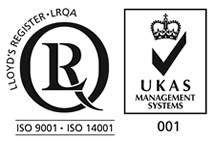
Main Products
Copyright 1998-2025 Firmetal Group All Rights Reserved. | Sitemap
Tantalum and tantalum alloys, due to their excellent chemical stability, high-temperature mechanical properties, corrosion resistance and formability, have been widely applied in many high-tech fields such as aerospace, metallurgy and chemical engineering, and nuclear industry. In view of the huge application potential of tantalum and its alloys, scholars at home and abroad have conducted in-depth and extensive research on them and achieved rich research results.
Among refractory metal materials, tantalum features a relatively high melting point (2996℃), an extremely low ductile-brittle transition temperature (-196℃), excellent plastic processing and formability, superior corrosion resistance, wear resistance, creep resistance, and high-temperature mechanical properties. It is widely used in numerous high-tech fields such as aerospace, nuclear industry, metallurgy, chemical engineering, and national defense. Tantalum alloys possess relatively excellent room-temperature formability and high-temperature mechanical properties, and have great application potential in extreme environments. Because the basic strengthening method of Ta alloy is solid solution strengthening, and the elements with relatively obvious strengthening effects are mainly W, Hf, Nb, etc., scholars at home and abroad have mainly developed alloys such as Ta-W series, Ta-Hf series, and Ta-Nb series.
The atomic sizes and lattice types of metals Ta and W are close, and they have a relatively high solid solubility in Ta. They are ideal solid solution strengthening elements for Ta alloys. Solid solution element W can enhance the high-temperature strength and thermal stability of Ta-based alloys, effectively expanding the application fields of Ta alloys. The room-temperature mechanical properties of Ta-2.5W, Ta-5W and Ta-7.5W alloys (FS-61) indicate that when the W content is less than 5%, the Ta-W alloy can achieve complete solid solution and form a Ta-W solid solution alloy. When the W content is greater than 5%, W cannot be completely dissolved in the Ta matrix. However, as the W content increases, the precipitates can nail the grain boundaries, inhibit the movement of grain boundaries in the alloy structure, refine the grains, and enhance the strength of the alloy, but it will reduce the plastic deformation capacity of the alloy. Ta-7.5W alloy is commonly prepared by powder metallurgy process. Due to its high content of intercalating elements, it has a relatively high strength at room temperature. For instance, the cold-drawn wire of the alloy (compressed by 83%) has a yield strength of approximately 1100MPa. Its applications include springs and other elastic parts in gas chlorectors.
Tantalum alloys with a W mass fraction greater than 10% are generally high-tungsten-content tantalum alloys. It can be known from the analysis of the mechanical performance data of Ta10W and Ta12W. As the tungsten content increases, the high-temperature strength of the alloy also rises, while its plasticity decreases. Ta12W features higher creep strength and a lower creep rate, making it an excellent material for heat-resistant components.